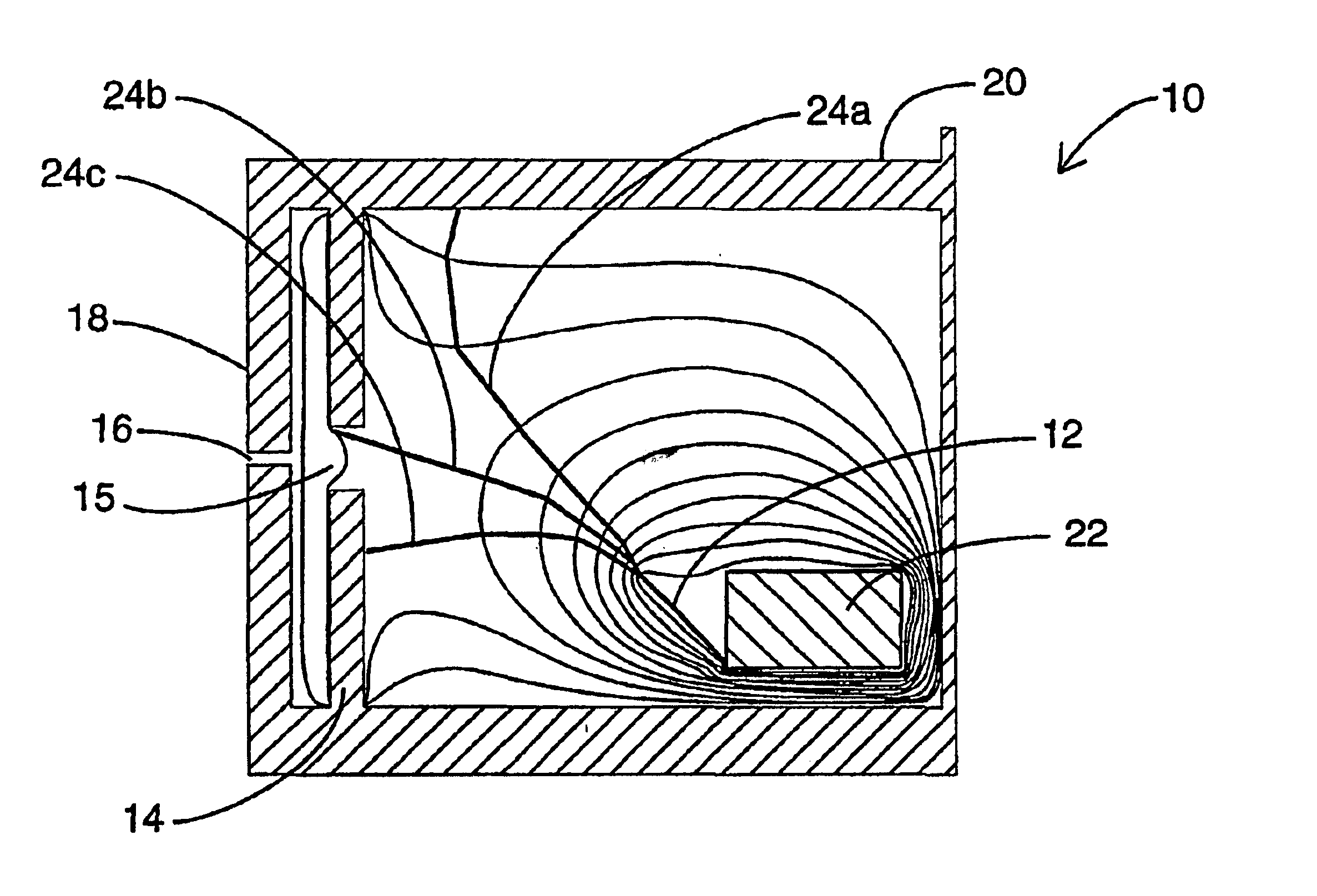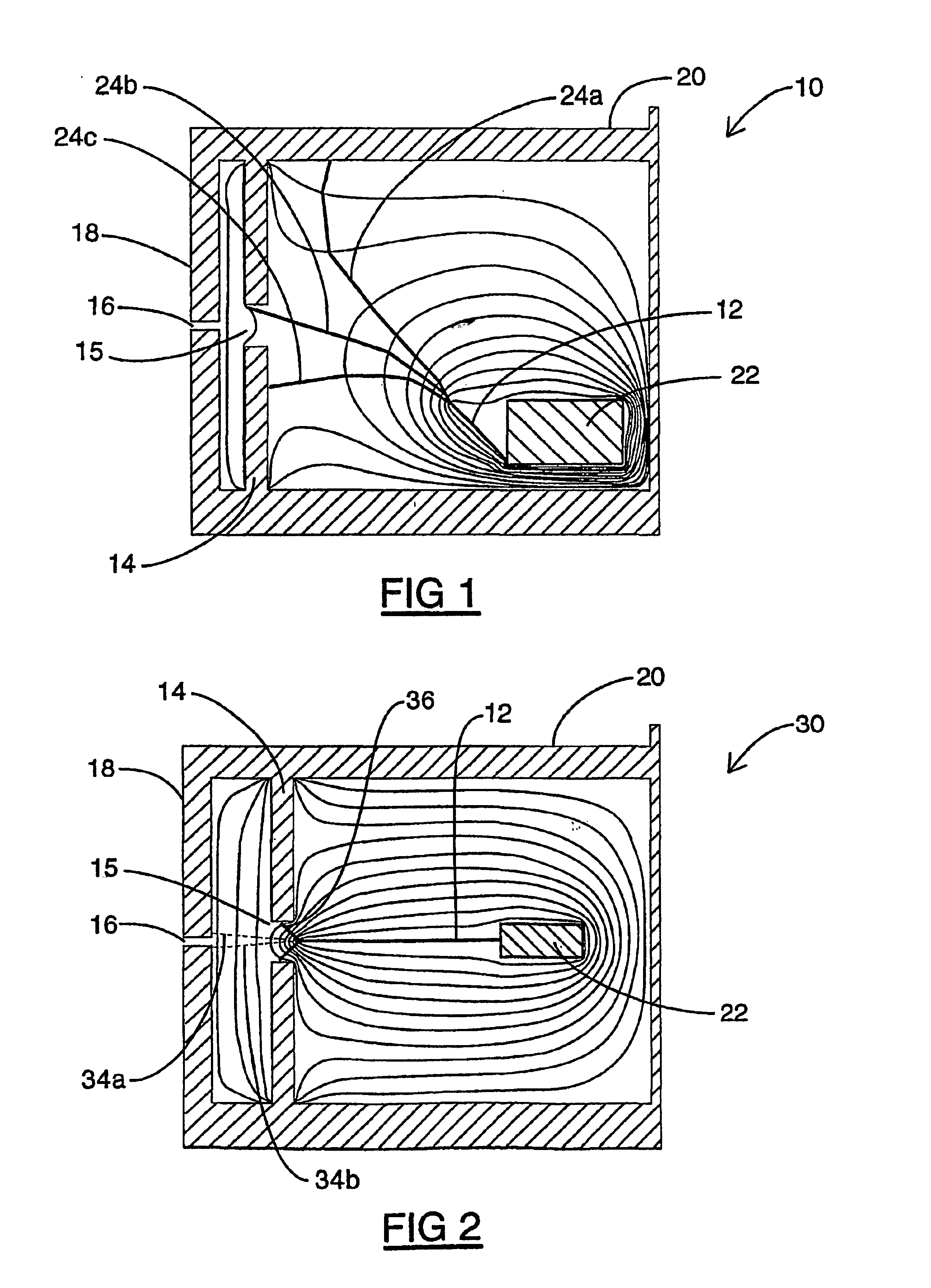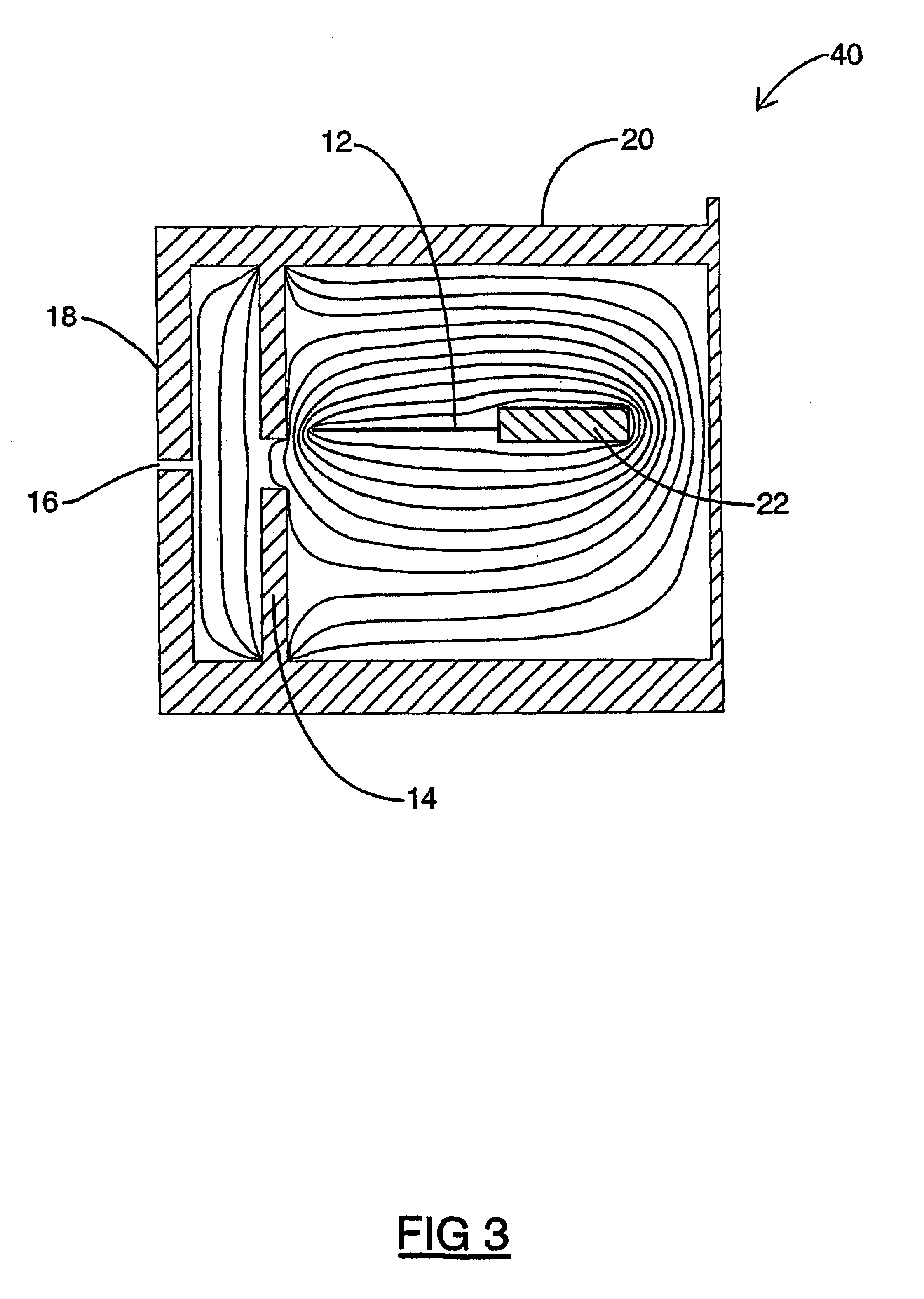Atmospheric pressure ion lens for generating a larger and more stable ion flux
- Summary
- Abstract
- Description
- Claims
- Application Information
AI Technical Summary
Benefits of technology
Problems solved by technology
Method used
Image
Examples
Embodiment Construction
[0096]In this description, like elements in different figures will be represented by the same numerals. In addition, all voltages are DC voltages. Furthermore, all simulation results shown in this description were obtained using the MacSIMION, version 2.0 simulation program.
[0097]Simulation results for prior art ion source configurations will be described first. Referring to FIG. 1, a conventional ionspray or high flow-rate ESI ion source 10 is shown comprising a sprayer 12, a curtain plate 14, an aperture 15 in the curtain plate 14, an orifice 16 in an orifice plate 18, a housing 20 and a sprayer mount 22. The curtain plate 14, the orifice plate 18, and the housing 20 serve as counter electrodes for the ESI ion source 10. The region between the curtain plate 14 and the orifice plate 18 is at atmospheric pressure and is flushed with a gas such as nitrogen. The rest of the interior of the housing 20 is also at atmospheric pressure. The orifice plate 18 separates the atmospheric press...
PUM
 Login to View More
Login to View More Abstract
Description
Claims
Application Information
 Login to View More
Login to View More - R&D
- Intellectual Property
- Life Sciences
- Materials
- Tech Scout
- Unparalleled Data Quality
- Higher Quality Content
- 60% Fewer Hallucinations
Browse by: Latest US Patents, China's latest patents, Technical Efficacy Thesaurus, Application Domain, Technology Topic, Popular Technical Reports.
© 2025 PatSnap. All rights reserved.Legal|Privacy policy|Modern Slavery Act Transparency Statement|Sitemap|About US| Contact US: help@patsnap.com



